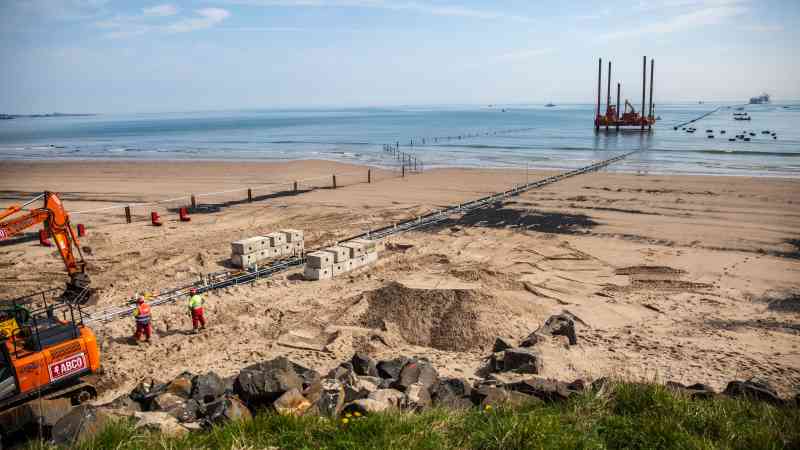The energy watchdog will today unveil plans to unlock billions of pounds of new investment in electricity links between Britain and its neighbours.
Ofgem will invite bids to build more interconnectors, which are the undersea cables that link the UK’s electricity network to continental Europe.
The plan would help the UK reach its climate goals, reinforce the country’s energy security and save households money, the regulator said. The government aims to at least double interconnector capacity by 2030, alongside quadrupling offshore wind capacity.
Akshay Kaul, Ofgem’s director of networks, said: “Greater interconnection of energy across borders is vital to ensure resilience, affordability and sustainability in the future as we transform our energy system.
“Our next investment round for interconnectors will bring forward the investment we need, creating green jobs and unleashing the full potential of the UK’s world leading offshore wind industry, while also protecting customers by capping costs.”
Ofgem said that it will invite bids for “multiple-purpose interconnectors”, which can link groups of offshore windfarms directly to cables, allowing surplus energy produced from wind farms in the North Sea to be transferred over to Europe, for example.
The UK, which is heavily dependent on gas, has seven subsea links, five of which go to the Continent: IFA, IFA2, Nemo Link, BritNed and the North Sea Link. The other two link with Ireland. The UK market has 7.4 gigawatts (GW) of electricity in interconnector capacity and last year the connectors provided 7 per cent of the country’s electricity.
Ofgem has approved seven more interconnectors, which are expected to be operational by 2025. Three of them will link to France and one each to Denmark, Ireland, Germany and Norway. The new round of investment will seek projects that are likely to be constructed by 2030.
The National Grid is also proposing two more interconnectors: Nautilus, a 1.4GW link with Belgium, and Eurolink, a 1400-megawatt transmission cable from the Netherlands to the UK.
The new interconnectors will be built under Ofgem’s “cap and floor” regime, which allows companies to propose and construct interconnectors with the regulator’s approval. The 25-year cap establishes how much money the company can make, in order to protect consumers, while the floor gives the developers a guaranteed minimum return.
This year renewable energy production fell in the UK as low wind speed and drier conditions than usual depressed wind and hydroelectric output. As a result, the demand and output for gas rose, causing prices to jump.
